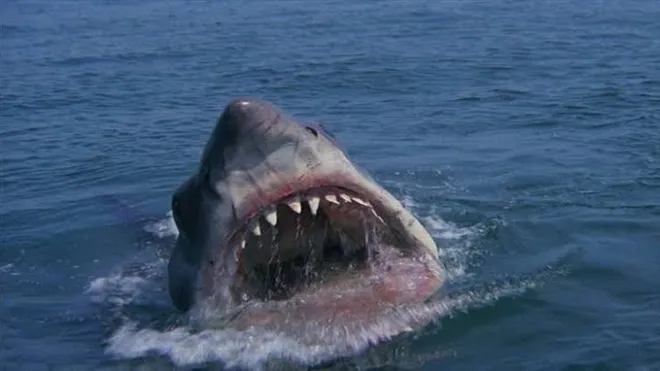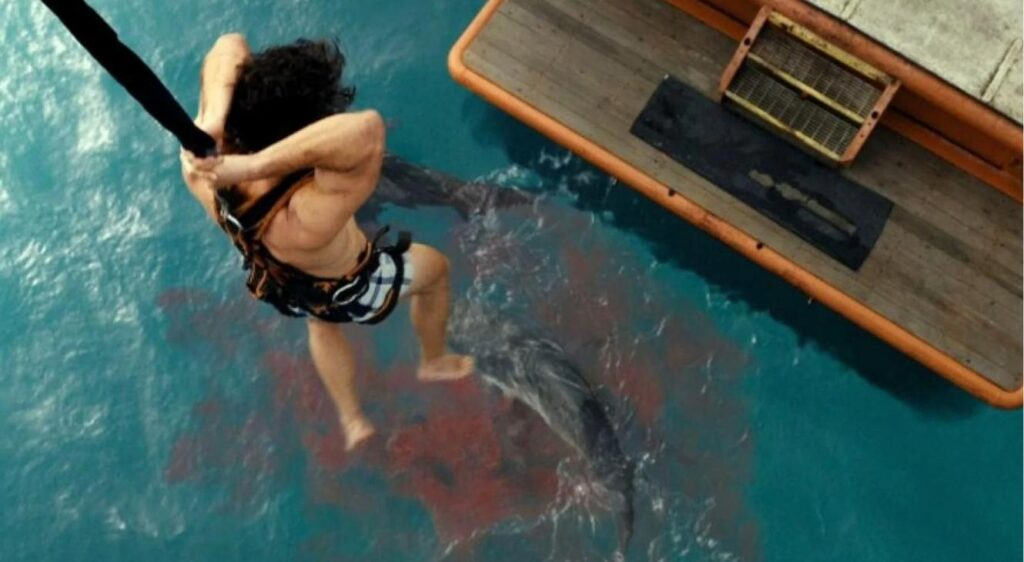
Shark movies usually follow a simple rule: the bigger the teeth, the bigger the terror. But Dangerous Animals isn’t your typical shark-hating flick. Starring Jai Courtney, Hassie Harrison, and Josh Heuston, this new ocean-set thriller from director Sean Byrne does something most shark films never dare: it stops blaming the shark.
With real underwater footage and a human villain at its core, the film flips the genre’s usual script. Instead of toothy predators lurking below, the real danger is already on board. And unlike Jaws, which made generations fear the ocean, Dangerous Animals reminds people that the real monsters are often those who are closest to us.
How Steven Spielberg’s Jaws successfully made a whole generation hate sharks!
Jaws is iconic. Steven Spielberg’s 1975 hit redefined horror, suspense, and the summer blockbuster itself. It turned an animatronic shark into a legend and had people refusing to dip their toes into the ocean for years.
But while Jaws made for unforgettable cinema, it also did real damage to sharks. Their reputation did take a hit. It didn’t just make people fear them, it made people hate them.

Thanks to its menacing score and the relentless portrayal of a shark as a calculating killer, Jaws cemented the idea that these creatures were villains. The shark wasn’t just dangerous, it was evil, hunting for sport, seemingly fueled by rage.
Sharks thus became the go-to bad guys in every B-movie, deep-sea thriller, or Discovery Channel documentary.
For decades, thanks to Jaws, people have viewed them through a lens of pure terror, and that’s what the legacy director Sean Byrne and Dangerous Animals set out to challenge. And to be honest, also successfully did!
This new movie is a horror-thriller set on the open ocean that flips the classic shark movie formula on its head. Instead of a killer shark as the main threat, the real danger comes from a man, specifically Bruce Tucker, played by Jai Courtney.
Dangerous Animals finally redeems the ocean’s most misunderstood creatures!
What truly sets Dangerous Animals apart is how carefully it treats its sharks and its story. Rather than relying on CGI or fake creatures, director Sean Byrne painstakingly sifted through hundreds of hours of real shark footage to find moments that captured the sharks’ true behavior and character.

These sharks aren’t just scary props, they’re real animals with scars and markings that tell their own stories. In an interview with ScreenRant, he explained,
Every shark that you see underwater is a real shark. Everything you see underwater is real. Fins above water are CGI, just because it’s impossible for the blocking.
This genuine respect for the sharks grounds the film, making every underwater scene feel alive and unpredictable, far from the usual Hollywood monster cliches.
But the care for sharks isn’t just about visuals, it’s about the story’s heart. As he further explained,
They’ve got scars the same way humans have scars. That was so important to me–our scars are a big part of our personality, and you never see that in shark films.
Instead of portraying sharks as villains, the film shifts the danger to the human on board, Jai Courtney’s Bruce Tucker, whose menace stems from his actions and mindset. This switch forces viewers to rethink who the real threat is, while the film’s slow, deliberate pacing traps the audience in a tense, claustrophobic world where the water feels safer than the deck.
All in all, Dangerous Animals delivers a fresh take on the shark genre, one that just might start to undo the damage Jaws left behind on the shark community.
Dangerous Animals is playing in theaters now.
This post belongs to FandomWire and first appeared on FandomWire
